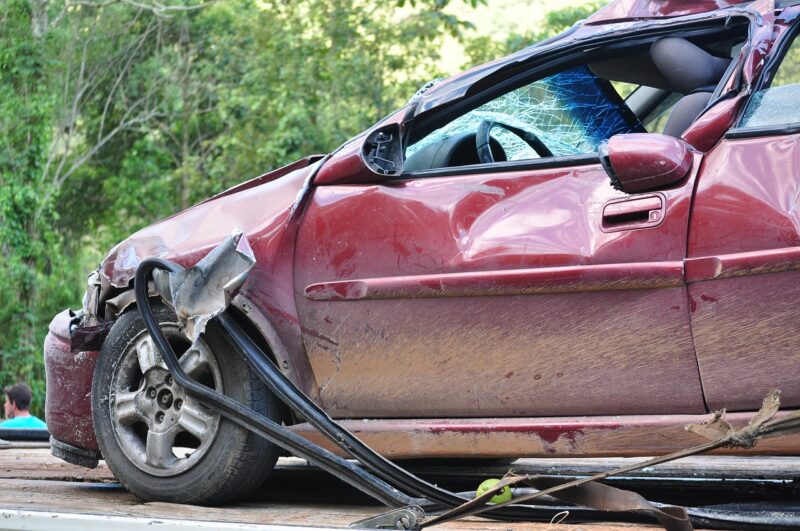How Safety Ratings Are Determined for Cars and What They Mean for Buyers
November 11, 2024

When purchasing a car, safety is often one of the foremost concerns for buyers. The last thing anyone wants is to find themselves involved in an accident without the assurance that their vehicle can protect them. Cars undergo rigorous testing to determine safety ratings, which serve as indicators of how well they perform in crash situations and their ability to protect occupants.
To decipher these complex ratings, we need to understand how they are determined and what they mean for the average driver.
1. Understanding Safety Ratings
Safety ratings provide crucial information to consumers, helping them make informed decisions about which car model to buy. These ratings are typically published by various organizations that conduct crash tests and evaluate vehicle safety features.
Common organizations responsible for safety ratings include:
- National Highway Traffic Safety Administration (NHTSA): This U.S. government agency provides a star rating system based on testing conducted on crashworthiness and rollover propensity.
- Insurance Institute for Highway Safety (IIHS): An independent organization that conducts crash tests and evaluates vehicles based on a more rigorous set of criteria, leading to ratings like “Good,” “Acceptable,” “Marginal,” and “Poor.”
- European New Car Assessment Programme (Euro NCAP): A European safety rating organization that conducts testing and provides information similar to the NHTSA and IIHS.
Each organization uses a unique methodology to assess vehicle performance, resulting in different ratings even for the same vehicle. Understanding these ratings can empower consumers to make safer choices.
2. How Safety Ratings Are Determined
Safety ratings are based on extensive crash testing and evaluation of a car’s safety features. The testing methodologies vary, but they generally focus on the following;
Crash Tests:
Crash tests are performed by simulating different types of car accidents. This includes front and side impact tests, rear-impact tests for whiplash protection, and rollover tests.
In these tests, dummies equipped with sensors are situated in various positions within the car to assess how well the car protects occupants. The results provide data on injuries that could occur during an actual crash, which is used to calculate the overall safety rating.
Safety Features Evaluation:
Safety ratings also consider the presence and effectiveness of advanced safety features, such as:
- Anti-lock brake systems (ABS): Helps maintain vehicle control during emergency braking.
- Electronic stability control (ESC): Reduces the risk of rollover and helps maintain steering control during sudden maneuvers.
- Airbags: The quantity and placement of airbags are evaluated, with particular attention to front, side, and curtain airbags that protect passengers in the event of a crash.
- Advanced Driver Assistance Systems (ADAS): Features like automatic emergency braking, lane-keeping assist, and adaptive cruise control significantly enhance vehicle safety and are considered in ratings.
The combination of crash test results and the effectiveness of safety features culminates in a comprehensive safety rating.
3. Significance of Safety Ratings for Buyers
Safety ratings play a vital role in the purchasing process for several reasons:
Informed Decision Making:
Safety ratings provide valuable insight into how a car is likely to perform in the event of an accident. Understanding these ratings allows buyers to compare different models critically and choose one with proven safety performance.
Insurance Premiums:
Insurance companies often take safety ratings into account when determining premiums. Cars with better safety ratings typically have lower insurance costs, making them more economical choices in the long run.
Resale Value:
Vehicles with high safety ratings may retain their value better than those with lower ratings, as consumers continue to prioritize safety when buying used cars.
4. Factors Affecting Safety Ratings
Various factors significantly influence safety ratings for vehicles:
Vehicle Design and Construction:
The design and materials used in constructing vehicles greatly affect performance in crash tests. Cars that utilize high-strength steel or advanced crumple-zone technologies tend to fare better in safety evaluations.
Size and Weight:
Generally, larger and heavier vehicles tend to provide better protection due to their size advantage, resulting in lower risk of injury in collisions with smaller vehicles. However, this should be balanced with the vehicle’s handling and maneuverability.
Technological Innovations:
With the advancement of technology, newer cars often come equipped with advanced safety features that enhance their ratings. Manufacturers continually innovate, and vehicles equipped with these systems generally perform better in safety tests.
5. Interpreting Safety Ratings: What Do They Mean?
When examining safety ratings, it’s essential to understand their implications for buyers:
Star Ratings:(NHTSA)
NHTSA’s star rating system provides a straightforward visual guide. Vehicles can receive from one to five stars, with five being the highest. Generally, vehicles with four or five stars are considered to offer excellent protection in crashes.
IIHS Ratings:
The IIHS ratings use a qualitative approach (Good, Acceptable, Marginal, Poor). A car must score well across various tests to earn a Top Safety Pick designation, which signifies a high level of safety.
Consumer Perceptions:
Safety ratings influence public perceptions and buying behavior. Cars with superior safety ratings often lead to heightened customer trust and subsequent sales increases.
Conclusion
In a world where road safety remains a paramount concern, understanding how safety ratings are determined can significantly influence vehicle purchasing decisions. The combination of detailed crash testing and evaluation of advanced safety features enables buyers to make informed choices about their next car. By paying attention to these ratings, consumers can invest in vehicles that not only align with their budget but also provide the peace of mind that comes with knowing that they are protected while on the road.
In the end, understanding safety ratings isn’t just a matter of statistics; it’s about ensuring safety for you and your loved ones while driving.






